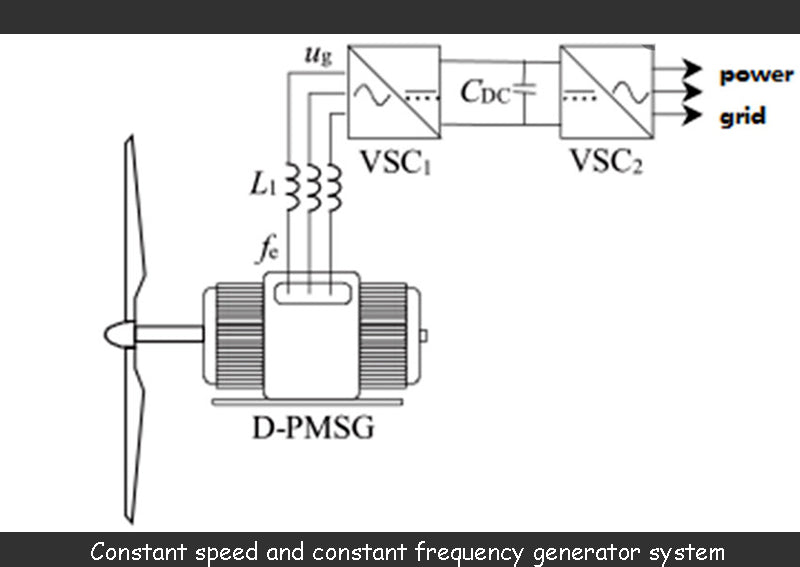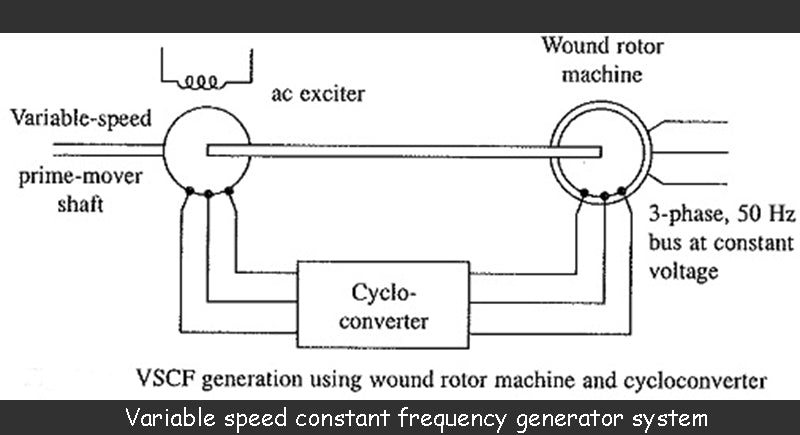
Humans have used wind energy for thousands of years. Before the invention of the steam engine, wind energy was used to power machinery such as grinding grain, pumping water, and sailing ships. Today, wind energy can be generated from wind pollution-free on a large scale, supplied to individual users or fed to a central grid. Due to abundant wind energy resources, mature wind power generation technology, and increasingly competitive wind power prices, wind power has become the fastest growing energy source in the world. In recent years, the average annual growth rate of wind power generation capacity has exceeded 30%, while the annual growth rate of new wind power generation capacity has reached 35.7%. At the same time, the wind power equipment manufacturing industry has developed rapidly, and various types of wind turbines such as constant speed and variable speed have gradually achieved commercialization and industrialization, and large-scale wind power generation has entered industrialization all over the world.
1.Wind power generation
Wind turbines are composed of fans and generators, generally composed of blades (wind collecting devices), generators (including transmission devices), direction regulators (tails), towers, speed-limiting safety mechanisms and energy storage devices. There are three operation modes of wind power generation: one is the independent wind power generation operation mode. The whole system usually consists of three parts: wind generator, inverter and battery. The wind generator provides electricity to one or several users, and the battery is used for energy storage. In order to ensure the power consumption when there is no wind; the second is the hybrid wind power generation operation mode. In addition to the wind turbine, the whole system also has a set of backup power generation system, usually using the oil generator, when the wind turbine cannot provide enough power When the time comes, the diesel engine is put into operation; the third is that wind power is integrated into the conventional power grid to provide power to the large power grid. Usually, dozens or even hundreds of wind turbines are installed in a wind farm, which is the main way of wind power generation.

2.Development direction of wind power generation technology
With the continuous progress of science and technology and the inclination of energy policies of various countries in the world, wind power generation has developed rapidly, showing broad prospects. The development trend of world wind power generation technology in the next few years is mainly reflected in the following aspects.
2.1 The development of large-scale wind turbines
Before the 21st century, the capacity of mainstream models in the international wind power market increased from 50kW to 1500kW. After entering the 21st century, with the maturity of technology, wind turbines continue to develop to large-scale. At present, the scale of wind turbines has been increasing, and the international wind turbines with a single unit capacity of 1~3MW have become the international mainstream wind turbines. The 5MW wind turbine has been put into trial operation. Since 2004, the megawatt-class wind turbines above 1MW accounted for 74.90% of the newly installed capacity. Large-scale wind turbines have two development modes, onshore and offshore. Onshore wind power generation. Its direction is low wind speed power generation technology. The main models are large wind turbines of 1~3MW. The key to this mode is to transmit electricity to the grid. Offshore wind power generation is mainly used in relatively shallow offshore waters. Generally, large-scale wind turbines above 3MW are installed, and large-scale wind farms are arranged. As onshore wind farms use less space, offshore wind farms will occupy an increasingly important share in future wind energy development.
In the wind power system, the generator is the core part of the energy conversion. In wind power generation, when the generator is running in parallel with the grid, the wind power frequency is required to be consistent with the grid frequency, that is, the wind power frequency remains constant. Therefore, the wind power generation system is divided into a constant speed constant frequency generator system (CSCF system) and a variable speed constant frequency generator system (VSCF system) according to the operation mode of the generator. The constant speed and constant frequency generator system refers to keeping the speed of the generator unchanged in the process of wind power generation, so as to obtain constant frequency electric energy consistent with the frequency of the grid. The constant speed and constant frequency system is generally relatively simple. The generators used are mainly synchronous generators and squirrel cage induction generators. The former runs at a synchronous speed determined by the number of motor poles and frequency, while the latter runs at a slightly higher speed. run at synchronous speed. The variable speed constant frequency generator system means that in the process of wind power generation, the speed of the generator can change with the wind speed, and other control methods can be used to obtain constant frequency power that is consistent with the frequency of the grid.


2.2 Variable length of wind turbine blades
As the diameter of the rotor increases, the wind turbine can capture more wind energy. A rotor with a diameter of 40m is suitable for a 500kW wind turbine, while a rotor with a diameter of 80m can be used for a wind turbine of 2.5MW. Blades over 80m in length have been successfully operated. For every meter of blade length increase, the wind energy that can be captured by the wind turbine increases significantly. Like blade length, blade design plays an important role in improving wind energy utilization. At present, countries with developed wind power technology such as Denmark, the United States, and Germany, and some well-known wind power manufacturers are using advanced equipment and technical conditions to study variable-length blade technology. This technology can adjust the length of the blades according to the wind conditions. When the wind speed is low, the blades are fully extended to maximize power generation: as the wind speed increases, the output power is gradually increased to the rated power of the wind turbine, and once the wind speed exceeds this peak, the blades retract to limit Power transmission: If the wind speed continues to increase, the blade length will continue to shrink to the minimum. When the wind speed changes from high to low, the blade length will also be adjusted accordingly.
2.3 Continuous improvement of fan control technology
With the development of power electronics technology, the variable speed wind turbine has removed the heavy speed-increasing gearbox, the generator shaft is directly connected to the wind turbine shaft, the rotor speed changes with the wind speed, and the frequency of its alternating current also changes. Through the high-power power electronic converter placed on the ground, the alternating current with variable frequency is rectified into direct current, and then converted into alternating current output with the same frequency as the power grid. Because it is designed to achieve high aerodynamic efficiency in almost all wind conditions, the efficiency of wind turbines in capturing wind energy is greatly improved. Tests have shown that when the average wind speed is 6 or 7 meters per second, variable speed wind turbines capture 15% more wind energy than constant speed wind turbines. At the same time, due to the reduction of the quality of the nacelle, the stress condition of each component of the transmission system is improved, and the supporting structure of the wind turbine is reduced, thereby reducing the cost of facilities and the cost of operation and maintenance. This technology is economically feasible and has broad application prospects.
2.4 Wind power expands from land to sea
There are abundant wind energy resources and vast flat areas at sea. The wind speed is large and stable, and the average daily utilization hours can reach more than 20 hours. With the same capacity installed, the cost at sea will increase by 60% compared with that on land, and the electricity will increase by more than 50%. With the development of wind power generation, the total number of wind turbines on land has become saturated, and offshore wind farms will become the focus of future development. Although the upfront capital investment and operation and maintenance costs of offshore wind farms are much higher than those of onshore wind farms, the economies of scale of large wind farms make large wind turbines practical. In order to install larger units in offshore wind farms, many large wind turbine manufacturers are developing 3-5MW units. The commercial operation of multi-megawatt wind turbines in offshore wind farms is a new trend in wind energy utilization at home and abroad. Since 2006, offshore wind power in Europe has taken off on a large scale. By 2010, the installed capacity of offshore wind power in Europe will reach 10,000MW. The North Sea offshore wind farm currently under construction in Germany has a total power of 1 million kilowatts and a single power of 5MW. It is currently the largest wind farm in the world. The amount of electricity produced by this wind farm is comparable to that of conventional power plants.

2.5 Using a new type of tower structure for wind power generation
Currently, several companies in the United States are designing new towers in different ways. The adoption of new tower structures can help improve the economic viability of wind turbines. Valmount Industries came up with a completely different tower concept, inventing a non-tapered main shaft supported by two diagonal supports. This design is 12 times stronger than a steel structure, and can reduce the cost of the unsupported part of the structure as a whole, making it only half the cost of a traditional simple wind turbine structure. With a movable lifting platform, components such as the impeller can be lifted to the top of the tower. This tower features a small footprint and easy installation. Due to its low cost and no need for large cranes, this new tower broadens the range of available sites for wind energy utilization.
Read more: Basic knowledge of battery
















